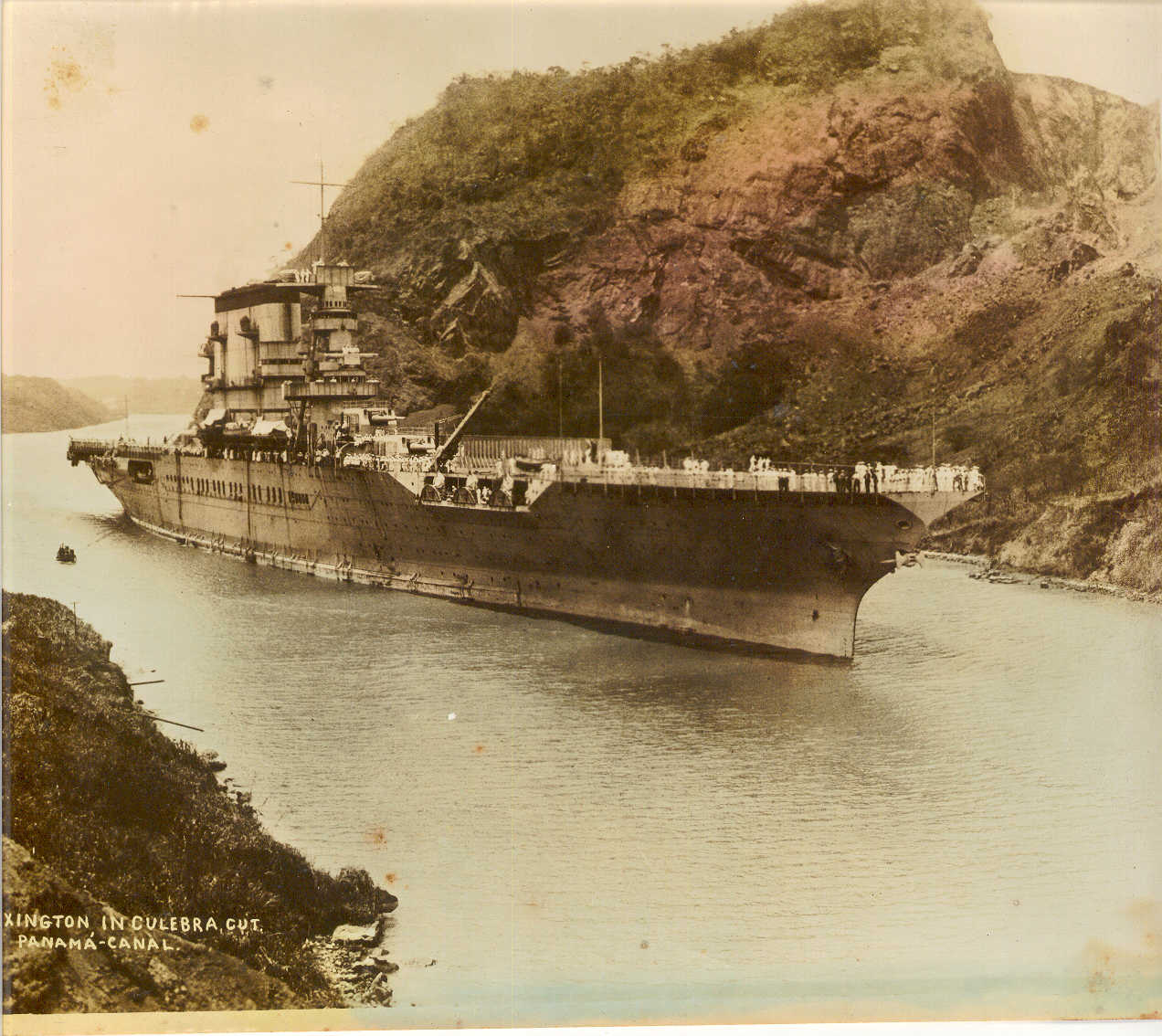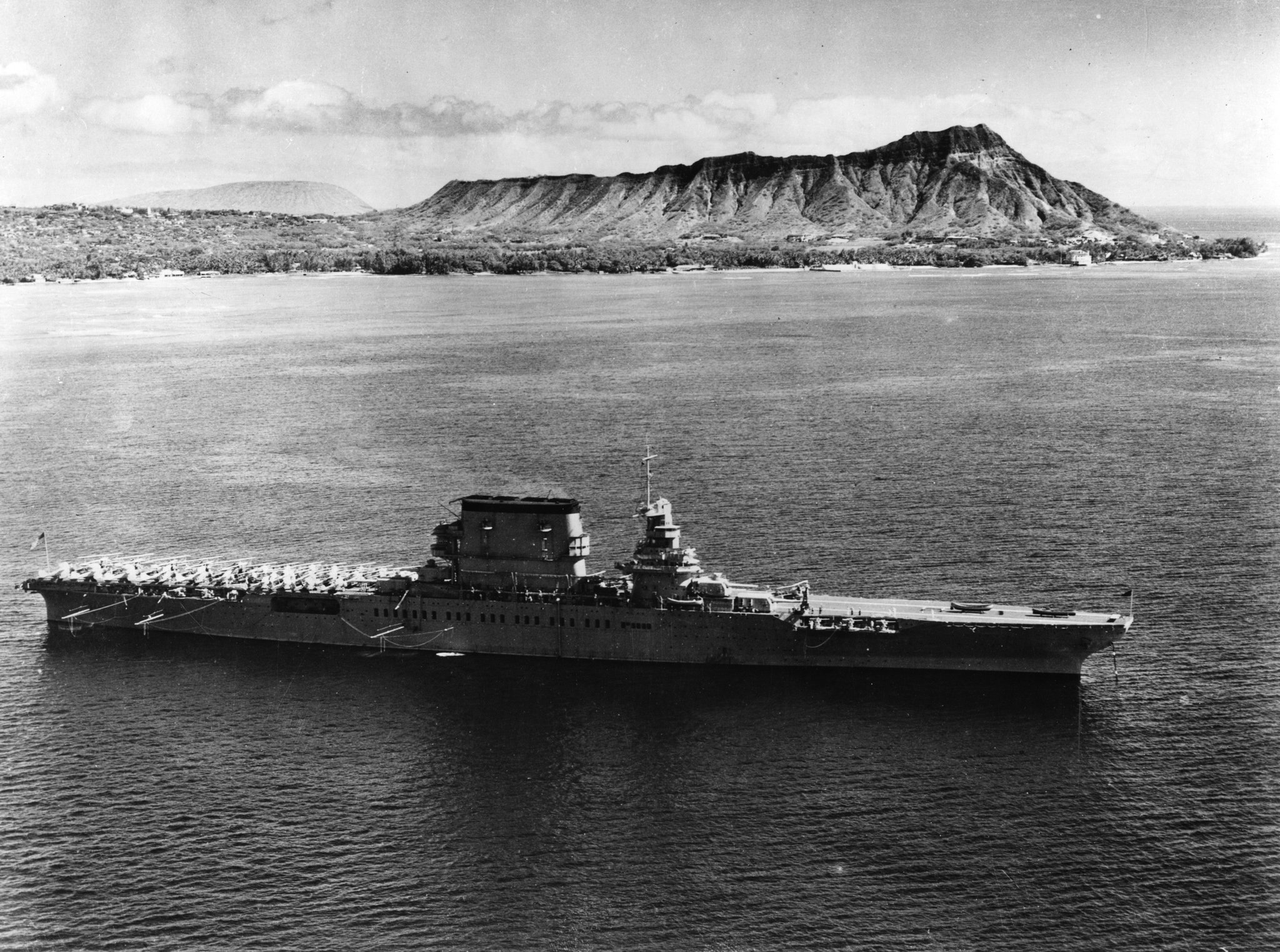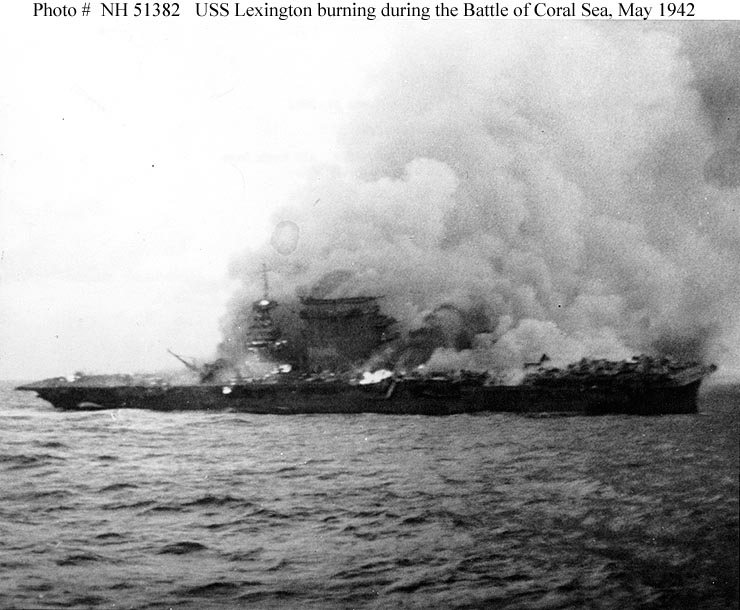
Testifying before the House Naval Affairs Committee on 21 February 1922, Bureau of Naval Aeronautics Chief, Rear Admiral William A. Moffett, told the committee that unless the United States built the "full allowance of carriers assigned to us by the terms of the treaty (Washington Naval Conference Treaty 1922)...our Navy can never be anything but a second-best Navy, which...has about the same value as a second-best poker hand."
While RADM Moffett did not get his wish list immediately, he did set into motion the beginnings of an American aircraft carrier program. Moffett was able to convince Congress to fund the conversion of two World War I battle cruisers into our first serious aircraft carriers, USS Lexington (CV-2) and USS Saratoga (CV-3).
USS Lexington would be commissioned on 14 December 1927. Without her and the other carriers acquired by RADM Moffett, the development of carrier techniques, fleet doctrine and the operational training of a generation of Naval Aviators during the late 1920s, the 1930s and into the early 1940s would have been impossible.

The Lexington would be involved in the first battle to pull a halt to the Japanese offensive in the Pacific at the "Battle of the Coral Sea" in May 1942. Unfortunately, part of the price of stopping the Imperial Japanese Navy was the loss of USS Lexington on 08 May 1942, but lessons learned at Coral Sea would be applied during Midway one month later.

Below is newsreel footage of the battle and sinking of Lexington...

